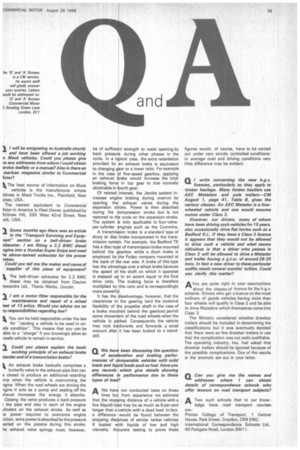CI I write concerning the new h.g.v.
Page 61

If you've noticed an error in this article please click here to report it so we can fix it.
licences, particularly as they apply to timber haulage. Many timber hauliers use AEC Matadors and pole trailers—CM August 1, page 41, Table B. gives the various classes. An AEC Matador is a fourwheeled vehicle and one would assume comes under Class 3.
However, our drivers, many of whom have been driving such vehicles for 15 years, also occasionally drive flat lorries such as a Bedford R.L. If they have a Class 3 licence it appears that they would not be allowed to drive such a vehicle and what seems ridiculous is that a driver who passes in Class 2 will be allowed to drive a Matador and trailer having a g.t.w. of around 28-29 tons. In fact a new driver to these particular outfits needs several months' tuition. Could you clarify this matter?
AYou are quite right in your assumptions
about the classes of licence for the h.g.v. scheme. Drivers who get a licence on the most ordinary of goods vehicles having more than four wheels will qualify in Class 2 and be able to drive Matadors which themselves come into Class 3.
The Ministry considered whether drawbar trailers should be included in determining the classifications but it was eventually decided that there were so few drawbar trailers in use that the complication was not really justifiable. The operating industry, too, had asked that drawbar trailers should be ignored because of the possible complications. One of the results is the anomaly set out in your letter.




































































































